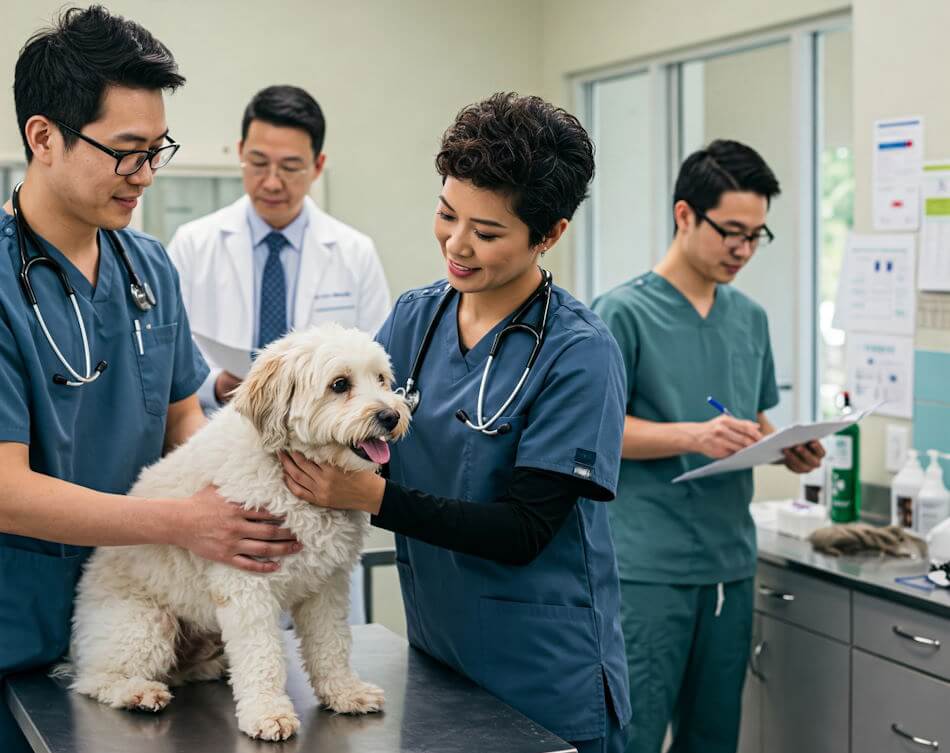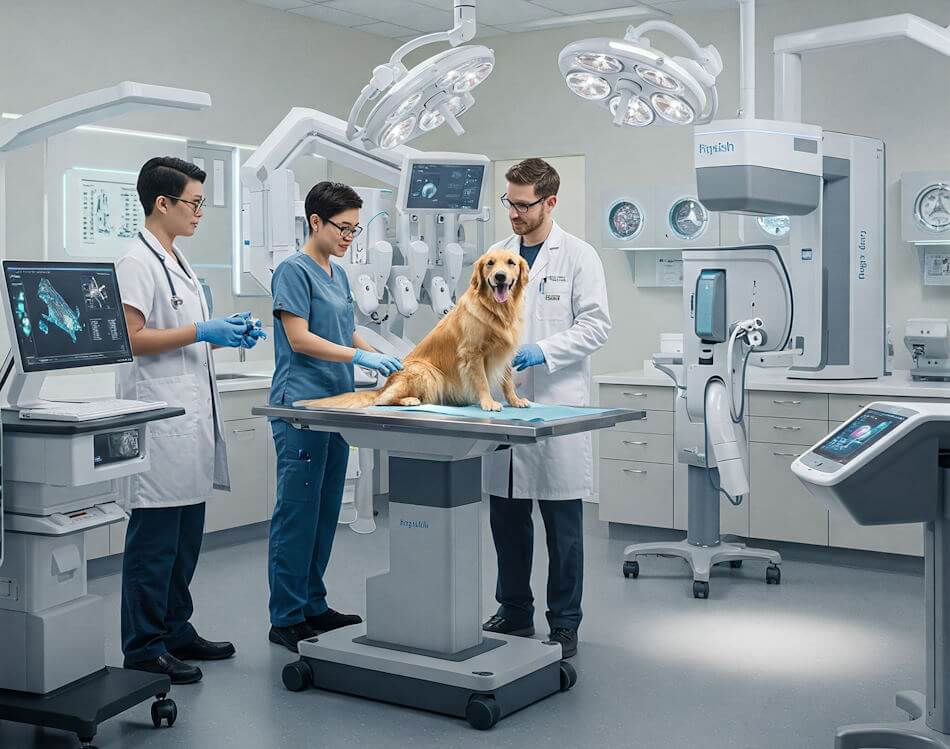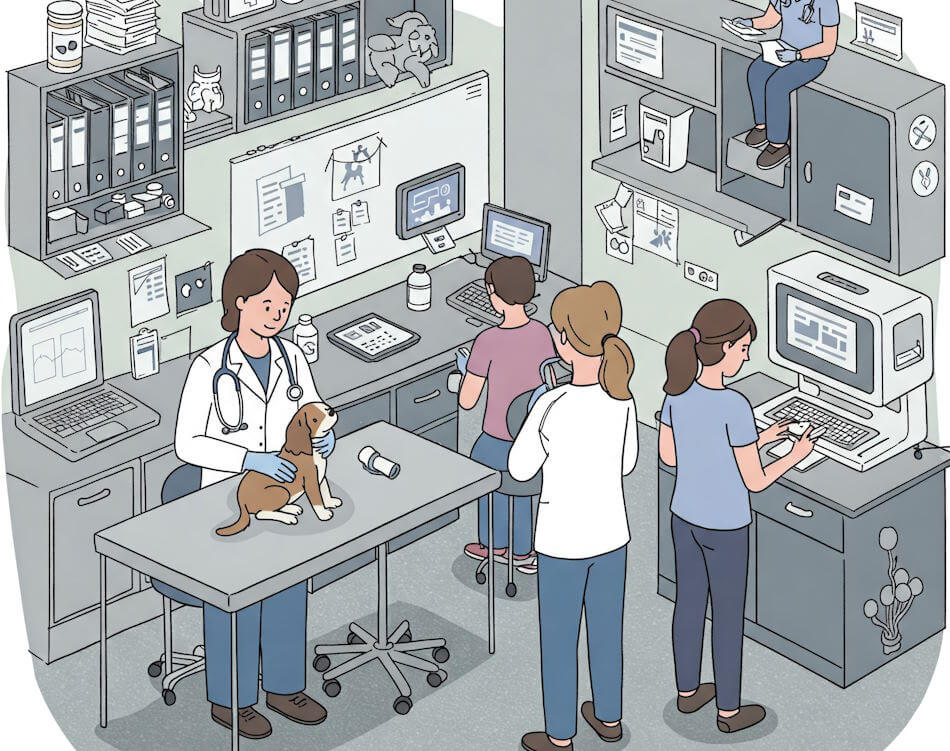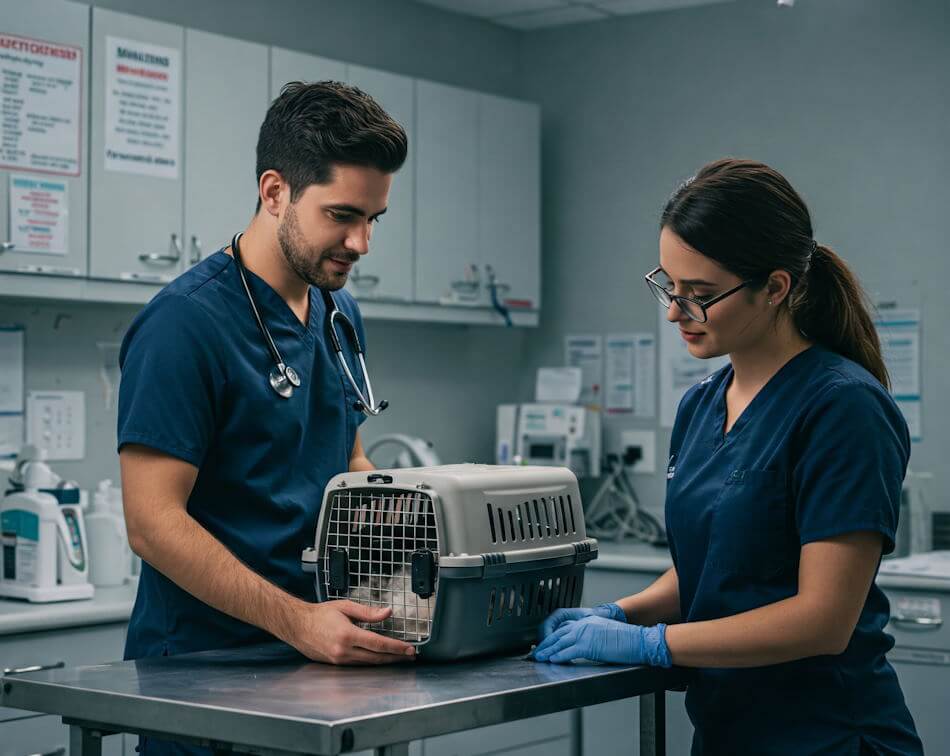Introduction to Veterinary Licensing
Veterinary licensing serves as a foundational element within the field of veterinary medicine, ensuring that only qualified professionals are permitted to practice. The primary purpose of veterinary licensing is to establish a regulatory framework that upholds the standards of care and professionalism required in the treatment of animals. By granting licensure, veterinary boards assess various factors, including education, training, and competency, effectively ensuring that practicing veterinarians possess the requisite knowledge and skills essential for animal care.
Licensing is not only instrumental in safeguarding the welfare of animal patients but also enhances public confidence in veterinary services. When veterinarians are required to obtain a license, it creates a layer of accountability; thus allowing pet owners to trust the practitioners with their animals’ health. In many regions, the licensing process encompasses passing comprehensive examinations, fulfilling continuing education requirements, and adhering to ethical standards. This systematic approach strives to prevent malpractice and promote high-quality veterinary practices.
Moreover, veterinary licensing protects the profession itself by providing a clear distinction between qualified veterinarians and those who lack proper training. This differentiation is vital in maintaining high standards and ensuring that clients can make informed decisions regarding their pets’ healthcare. With an increasingly complex array of veterinary options available, the assurance of having licensed professionals significantly contributes to the integrity of veterinary medicine.
In this light, veterinary licensing emerges as a vital mechanism for safeguarding the health of animals and the values of the veterinary profession. It plays a crucial role in preserving the trust between veterinarians and the communities they serve, reinforcing the belief that animal care is managed by knowledgeable and responsible professionals.
The Licensing Process Overview
Obtaining a veterinary license is a crucial step for aspiring veterinarians, serving as the official recognition of their qualifications and readiness to practice. The licensing process typically begins with meeting educational prerequisites, which generally involve earning a Doctor of Veterinary Medicine (DVM) degree from an accredited veterinary college. This educational foundation equips future veterinarians with essential knowledge in animal health, pharmacology, and surgical practices.
Upon graduation, candidates must pass a series of examinations to demonstrate their competency. The North American Veterinary Licensing Examination (NAVLE) is a commonly required test that assesses a candidate’s proficiency in veterinary medicine. Successful completion of the NAVLE is a vital milestone in the licensing journey, providing a standardized evaluation of one’s skills and knowledge.
Following the examination, candidates must engage in the application process. This involves submitting a detailed application to the appropriate state veterinary board, along with official transcripts from their veterinary program. Most states also mandate background checks, including a review of any criminal history or professional misconduct. These checks ensure that only those with a suitable moral character and professional integrity are granted a license to practice.
In addition to fulfilling these requirements, some states may have additional regulations or specific criteria that applicants must meet, which often include continuing education mandates or a period of supervised practice. It is essential that candidates familiarize themselves with the licensing requirements specific to their state, as regulations may vary significantly across jurisdictions.
In conclusion, the journey from graduation to licensure involves a series of well-defined steps, including educational achievements, examination success, and thorough application procedures. Understanding these processes is crucial for aspiring veterinarians, as fulfilling these requirements paves the way for a successful career in veterinary medicine.
State-Specific Licensing Requirements
The requirements for veterinary licensing vary significantly from state to state, reflecting the diverse regulatory frameworks in place across the United States. Each state has its own veterinary medical board or a similar authority, responsible for overseeing the licensing process, continuing education mandates, and compliance regulations that veterinarians must adhere to in order to practice legally within that jurisdiction. Understanding these local regulations is paramount for aspiring veterinarians and those relocating to a new state.
In general, the licensing process in each state typically requires candidates to have completed an accredited veterinary program, passed the North American Veterinary Licensing Examination (NAVLE), and met any additional state-specific requirements. While many states follow similar guidelines, the specifics can differ in terms of the number of continuing education hours required, the types of acceptable professional development courses, and the fees associated with the licensing process. For instance, some states might mandate courses on specific topics such as animal welfare or veterinary ethics, which may not be required in others.
Moreover, it is essential for veterinarians to be mindful of the differing policies regarding veterinary technician licensing, which may involve separate examinations and certifications. To facilitate compliance with these varying regulations, many state veterinary boards maintain comprehensive websites. These resources typically offer detailed information regarding the licensing process, including forms, deadlines, and local statutes governing veterinary practice. Additionally, organizations such as the American Veterinary Medical Association (AVMA) provide valuable guidance on navigating the regulations tied to state licensing.
By familiarizing themselves with the state-specific requirements, veterinarians can ensure they remain compliant and uphold the standards of their profession, ultimately contributing to the welfare of the animals and communities they serve.
Continuing Education Requirements
Continuing education (CE) plays a pivotal role in the field of veterinary medicine, as it ensures that practitioners remain proficient and knowledgeable regarding the latest advancements and best practices. Maintaining a veterinary license typically involves fulfilling specific CE requirements, which vary by state and professional organizations. Most states mandate that veterinarians complete a certain number of CE hours within a designated time frame, usually ranging from 15 to 30 hours every one to two years.
Acceptable forms of continuing education often encompass a diverse array of learning opportunities. These can include attending workshops, seminars, or conferences focused on veterinary medicine, as well as enrolling in accredited online courses that cover relevant topics. Additionally, educational programs provided by veterinary associations, universities, and professional organizations are generally recognized as valid CE activities. It is vital for practitioners to verify that their chosen CE activities are approved by the licensing board in their jurisdiction to ensure compliance with state regulations.
Best practices for fulfilling CE obligations involve careful planning and proactive engagement in educational opportunities. Veterinarians are encouraged to stay informed about the CE requirements in their state and to take initiative in pursuing a variety of learning formats, including hands-on training, case studies, and peer discussions. Some professionals find it beneficial to participate in study groups or networking events, which not only enhance learning but also foster collaboration within the veterinary community. Furthermore, keeping meticulous records of completed CE activities will help streamline the license renewal process.
By committing to ongoing education, veterinary professionals not only enhance their skills and knowledge but also contribute to the overall advancement of the field, thereby ensuring high standards of care for their animal patients.
Compliance with Veterinary Laws and Regulations
Veterinarians play a crucial role in ensuring the health and welfare of animals, and as such, they must adhere to a variety of laws and regulations that govern their professional practice. These regulations are designed to protect animal welfare, maintain public health, and uphold the integrity of the veterinary profession. Compliance with veterinary laws is not only a legal obligation, but it also affirms a veterinarian’s commitment to ethical practice and the well-being of their patients.
One of the primary areas of veterinary compliance pertains to animal welfare laws. These laws establish standards for the humane treatment and care of animals, ensuring that veterinarians do not engage in neglectful or abusive practices. Compliance requires veterinarians to stay informed about both federal and state regulations that dictate acceptable practices in animal handling, housing, and general care. Such legal frameworks are essential in promoting humane treatment and minimizing suffering among animals under veterinary care.
Additionally, veterinarians must navigate prescription regulations, which govern the dispensing of medications for animals. This includes restrictions on controlled substances, proper record-keeping, and guidelines on client communication regarding medication usage. Compliance with these regulations is critical not only for maintaining license eligibility but also for safeguarding the health of animals by preventing misuse and over-prescription of medications.
Ethical guidelines further contribute to the landscape of veterinary compliance. These guidelines encourage veterinarians to act in the best interests of their patients while also considering the welfare of the animals and the public trust. Upholding these ethical standards is essential in fostering a positive relationship with clients and the community at large. By adhering to laws and regulations, veterinarians demonstrate their professionalism and accountability, ultimately leading to improved animal welfare and higher standards within the veterinary field.
Consequences of Non-Compliance
Non-compliance with veterinary licensing and regulatory requirements can have serious implications for practitioners within the field. Failure to adhere to these legal frameworks may result in a range of disciplinary actions that not only affect the operational capabilities of a veterinary practice but also carry long-lasting effects on the veterinarian’s professional standing. Among the potential consequences, fines are common and can escalate depending on the severity of the infraction. Even negligent or unintentional violations can lead to monetary penalties that significantly burden practitioners financially.
In addition to fines, suspensions may occur, serving as a warning and a period during which the veterinarian is prohibited from practicing. A suspension can drastically impact a veterinary clinic’s operations, as the absence of a licensed professional can lead to a decline in client trust and a reduction in business. More severe cases of non-compliance could lead to the revocation of a license altogether, which is arguably the most detrimental outcome. The loss of a veterinary license not only halts a practitioner’s career but also creates barriers to re-entry into the profession, involving lengthy and often costly reinstatement processes.
The long-term impact of such disciplinary actions extends beyond immediate financial repercussions. A tarnished reputation within the veterinary community can affect future career opportunities and collaborations. Colleagues, clients, and potential employers often scrutinize disciplinary histories, and a veterinarian with a history of compliance issues may find it challenging to regain trust. Furthermore, the stigma associated with non-compliance can hinder networking opportunities essential for professional development. Thus, maintaining adherence to veterinary licensing and compliance requirements is crucial not only for individual practices but also for preserving the integrity of the veterinary profession as a whole.
The Role of Professional Organizations
Professional organizations serve as essential pillars within the veterinary profession, providing a multitude of resources designed to assist veterinarians in navigating the complexities of licensing and compliance. These organizations advocate for the interests of veterinarians at local, state, and national levels, ensuring their voices are heard in legislative matters that impact the practice of veterinary medicine. The American Veterinary Medical Association (AVMA) and the American Animal Hospital Association (AAHA) are two prominent entities that exemplify this role.
One primary function of these professional organizations is to offer educational opportunities that keep veterinarians informed of the latest developments in their field. This includes providing access to continuing education programs, workshops, and conferences that cover various topics, including compliance with licensing requirements. By encouraging lifelong learning, these organizations help ensure that practitioners remain current on best practices, legal obligations, and advancements in veterinary medicine.
In addition to advocacy and education, professional organizations often provide vital resources and tools that assist members in meeting their licensing obligations. For instance, they may offer guidance on specific state regulations, model practice acts, and templates for record-keeping and reporting. This support is invaluable for veterinarians who are navigating the intricate landscape of compliance. Furthermore, these organizations may also curate comprehensive databases and directories, allowing veterinarians to locate pertinent information quickly and efficiently.
As members of these professional associations, veterinarians can also engage with their peers, fostering a sense of community and collaboration. Networking opportunities can lead to mentorship, shared experiences, and enhanced professional growth. In essence, professional organizations not only advocate for the veterinary profession but also serve as a vital resource, equipping practitioners with the knowledge and tools necessary to comply with licensing standards effectively.
Emerging Trends in Veterinary Licensing
The field of veterinary medicine has been experiencing significant transformations, driven by advancements in technology, changes in consumer expectations, and evolving regulations. One notable trend is the increasing incorporation of telemedicine within veterinary practices. Telehealth, which allows veterinarians to conduct consultations and follow-ups remotely, has gained prominence, especially in light of recent global events such as the COVID-19 pandemic. This shift has prompted regulatory bodies to adapt existing veterinary licensing frameworks to accommodate the safe and effective use of telemedicine. Consequently, professionals in the field must stay informed about the compliance requirements associated with offering veterinary services via digital platforms.
Alongside telemedicine, educational pathways in veterinary medicine are also evolving, making it more accessible for potential students. Online veterinary programs are gaining traction, providing flexibility for those who may not be able to attend traditional in-person classes. These programs not only aim to deliver quality education but also adhere to the rigorous standards set by accrediting bodies to ensure that graduates are fully prepared for practice. Nevertheless, as the landscape shifts towards online education, licensing authorities are faced with the challenge of evaluating these new educational formats and determining their compliance with established licensing norms.
Furthermore, there is a growing emphasis on continuing education as part of the licensing renewal process. Veterinary professionals are encouraged to engage in lifelong learning to stay current with the rapidly changing knowledge base in veterinary medicine and to develop skills necessary for new treatment modalities. This trend highlights the importance of adapting licensing requirements to not only accommodate emerging practices but also to promote professional development within the field.
Overall, the evolution of veterinary licensing reflects a responsive approach to the changes within veterinary medicine and aims to foster an adaptable, compliant, and informed veterinary workforce.
Conclusion and Resources for Veterinarians
Understanding veterinary licensing and compliance requirements is essential for all professionals in the field of veterinary medicine. Developing a comprehensive grasp of these regulations not only ensures legal practice but also promotes the safety and well-being of both animals and the public. Throughout this discussion, we highlighted the various aspects of veterinary licensing, including the necessity for educational credentials, examination standards, and specific state regulations that govern practice. It has become evident that staying informed about licensing requirements is vital, as it directly affects a veterinarian’s ability to provide care and maintain their practice legally.
Veterinarians must be proactive in keeping their licensing status up to date by regularly consulting relevant regulatory bodies. The importance of continuing education and adherence to compliance requirements cannot be overstated, as these elements play a crucial role in fostering trust and professionalism within the veterinary community. Furthermore, understanding the nuances of state-specific regulations can help avoid potential legal issues that may arise from non-compliance.
To aid veterinarians in navigating the landscape of licensing and compliance, several resources are available. Websites, such as the American Veterinary Medical Association (AVMA) and the National Association of State Boards of Veterinary Medicine (NASBVM), offer a wealth of information on best practices and regulatory updates. Moreover, each state’s veterinary board can provide contact information and details regarding specific licensing requirements. Useful publications, such as the Journal of the American Veterinary Medical Association, frequently highlight changes in regulations and offer insights into compliance best practices.
By leveraging these resources effectively, veterinarians will be better equipped to understand their licensing obligations and foster a culture of compliance within their practices. Above all, prioritizing compliance will not only enhance the quality of veterinary services but also support the integrity of the profession as a whole.





